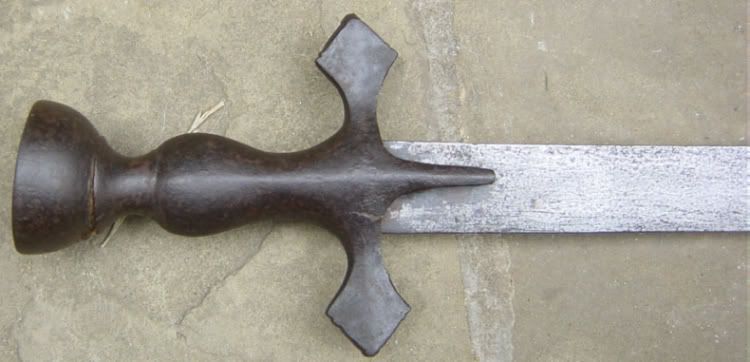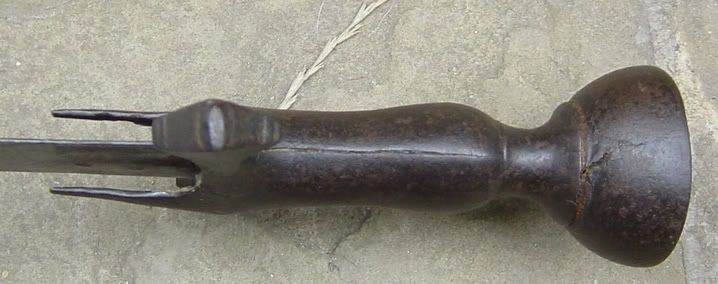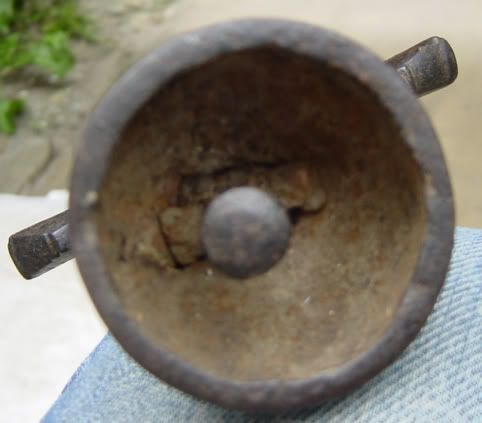
 |
|
|
|
|
#1 |
|
Member
Join Date: Dec 2004
Location: What is still UK
Posts: 5,935
|
In spite of it not really being my thing and knowing nothing about this area I find this sword quite interesting. The blade is 96cm long and flexible like a cavalry sabre. I think it is a slashing weapon. I also think it is of native manufacture although the engraving on the back does have some semblance to European writing, but I do not think it is. The whole thing was covered in old yellowed varnish. Once removed it is possible to see that the blade is covered in the paterns of folded steel, pamor? has been etched? and in very go condition as is the scabbard except a few rattan rings are missing. If any body has some old rattan rings bits they do not need you could pm me
 Anyway here are some pics of the whole thing and close ups latter. Anyway here are some pics of the whole thing and close ups latter.     
|
|
|

|
|
|
#2 |
|
Member
Join Date: Dec 2004
Location: What is still UK
Posts: 5,935
|
Engraving on the back. What is it? is it shown the right way round?
    More close ups of blade. The back of the blade is at the bottom of the picture.   Any comments? tell me more about it? |
|
|

|
|
|
#3 |
|
Member
Join Date: Jan 2006
Posts: 178
|
engraving is
" manufacture nationale de klingenthal " making by " Couleau " in europe we have many blades from Couleau galvano |
|
|

|
|
|
#4 |
|
Member
Join Date: Dec 2004
Location: What is still UK
Posts: 5,935
|
Galvano that is so helpful I can see it now, how fascinating! I cannot tell which period according to this link
http://users.skynet.be/euro-swords/klingenthal.htm I did not know there was any French influence in Sumatra/Borneo. The big question is was the blade made in a manner that appealed to the region or were the blades finished in a standard European fashion and then altered with etching by and to suit the new owners? I think I have some pictures of Sumatra mounted warrior I will look them out and post them. |
|
|

|
|
|
#5 |
|
Member
Join Date: Dec 2004
Location: What is still UK
Posts: 5,935
|
Well you learn something everyday. I was well aware of French Indochina but now consderable trade and influence in Sumatra and there abouts. The Brits may as we are told have had a bigger slice of the cake but the French had very often got there first. Respect
 
|
|
|

|
|
|
#6 |
|
Member
Join Date: Dec 2004
Location: What is still UK
Posts: 5,935
|
Making limited research using the PC, this blade is likely to be from the early part of the 19th century?
|
|
|

|
|
|
#7 |
|
Member
Join Date: Dec 2004
Location: What is still UK
Posts: 5,935
|
Sorry to keep banging on about this but I am finding these things out as I handle it. I think these blades were definitely made by the French to appeal to the local taste. The fact that there is little to no acid attack on the engraving to the back of the blade at the forte bares this out.
Last edited by Tim Simmons; 31st August 2007 at 09:11 PM. |
|
|

|
 |
|
|